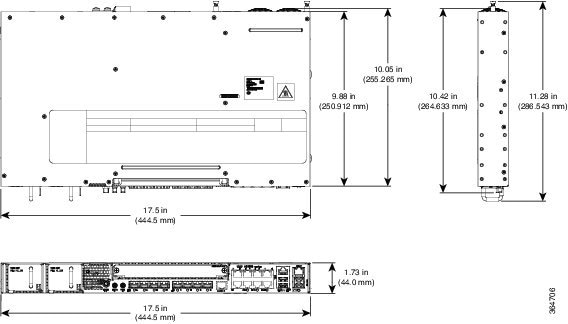Cisco ASR 920 Router Features
The router provides 1GE/10GE, MPLS, H-QoS, high availability hardware design, advanced Ethernet Operations, Administration, and Maintenance (OAM), as well as advanced timing support, including satellite timing (GNSS) based clocking, and PoE in one platform.
- ASR-920-12SZ-IM—This router has fixed Ethernet interfaces (8x1G copper + 4x1G SFP + 4x10G/1G (dual rate)
- ASR-920-12SZ-IM-CC—Has the same specifications as the above variant. However, this chassis is coated with an acrylic-based material to help improve the reliability against air-borne contamination.
The following table provides snapshot of the number and type of supported ports:
|
ASR 920 Sub-family |
1 GE Port |
Dual Rate 1G/10G Port |
Type of 1 GE Port |
|---|---|---|---|
|
ASR-920-12SZ-IM, ASR-920-12SZ-IM-CC |
12 |
41 Te0/0/12 – Te 0/0/15 |
8 Cu ports Ge0/0/0 – Ge0/0/7 4 SFP ports Ge0/0/8 – Ge0/0/11 |
















 Feedback
Feedback